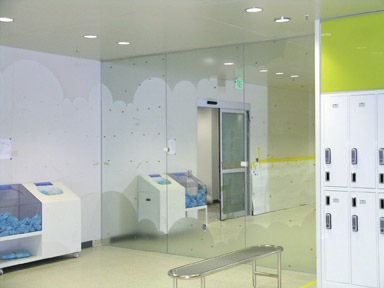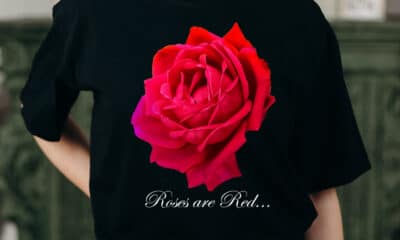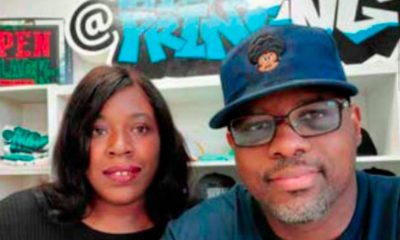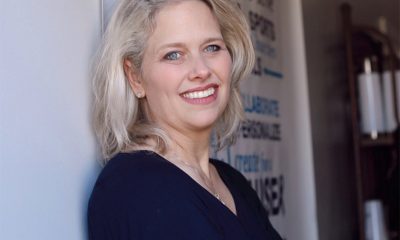Samsung’s new semiconductor fabrication facility in Austin, TX isn’t just another memory-manufacturing plant. The $3.5 billion building is the largest in the state where everything is bigger and is the largest foreign investment in the US. As part of its effort to create a clean, safe, and attractive environment for its staff, the company decided to bring a little life to several rooms in the plant with graphics of nature scenes and other attractive images. It was a simple concept in theory, but not so easy when the media for the job consisted of large glass and mirror panels.
Samsung researched some local print shops and contacted Austin Graphics for help on the project. David Pesnell founded Austin Graphics in 1997 as a service bureau that provided desktop publishing, film negatives, and Matchprint proofs to printers, designers, and ad agencies. That same year, Austin Graphics purchased its first large-format printer and laminator. Over the years, the firm added large-format inkjet printers and pursued the vehicle-wrap market. Today, the 21-employee company is equipped with solvent and UV inkjets, as well as photographic imaging technologies, to produce displays, P-O-P signage, and trade-show graphics for more than 2000 Austin-based companies. Austin Graphics also designs, prints, and installs approximately eight vehicle wraps each week.
Austin Graphics had never produced a job of the type that Samsung requested, but the printing company took on the gigantic assignment with confidence in one of its newest pieces of equipment, EFI’s VUTEk QS2000 flatbed printer. “I felt that we could produce the job within the customer’s tight deadline, and produce it with superior results,” Pesnell says.
Samsung provided the team at Austin Graphics with image files created in Adobe Photoshop and Illustrator. The first step of the project was to print samples of the images for Samsung. “They were stunned at the results we were able to achieve,” Pesnell says.
Samsung approved the samples, and Austin Graphics set to work. The team had 15 days to produce the graphics for the grand opening of the Samsung building. The job required more than 75 sheets of PETG to be second-surface printed, as well as 26 pieces of 3⁄8-in. tempered glass measuring at least 60 in. wide by 118 in. tall, with some of the glass panels weighing up to 300 lb. The job also called for 16 pieces of glass with an etched appearance. The printed pieces would be installed in the facility’s locker room, smock room, and Level 3 and Level 4 clean rooms.
Each piece of glass had to be cleaned with vinegar and water prior to printing, and then cleaned again when loaded on the printer. It took five employees to lift each panel onto the QS2000. Pesnell says lifting the mirror panels onto the glass was especially challenging because the pieces were long and very flimsy. The team at Austin Graphics applied a bonding agent to each piece of glass to aid surface adhesion. The final step in preparing the panels was to apply Avery 3001 vinyl to the back of each piece of glass and PETG sheet. This step provided a consistent white background on all of the images (the paint on the wall at the Samsung facility was not consistent) and to protect the printed side of the glass panels during transport from Austin Graphics to the Samsung facility.
The staff at Austin Graphics worked three shifts per day to complete the print job within the allowed time. Pesnell says at any given time he had at least five employees, including the operator of the VUTEk QS2000, on this job. And not one of the glass or mirror panels was damaged during the preparation and printing process. Unfortunately, two of the panels were broken by the glass specialist during installation and had to be reprinted.
In addition to the challenges of cleaning and loading the heavy panels, the team had to ensure precise alignment of all the pieces. “We had just the right amount of bleed,” Pesnell says. “We had to bleed off the edge of the glass as they were butting up against each other. It was tricky trying to make sure we had the right amount of bleed.”
Other challenges included a language barrier between the folks at Austin and the originators of the project at Samsung’s office in Korea. Despite the trials they faced inside and outside of the production area at Austin Graphics, the project was a great success. “They [Samsung] were stunned. They could not believe how sharp, crisp, and accurate the images were. They were very impressed with it,” Pesnell says.

 Case Studies2 months ago
Case Studies2 months ago
 Art, Ad, or Alchemy2 months ago
Art, Ad, or Alchemy2 months ago
 Andy MacDougall2 months ago
Andy MacDougall2 months ago
 Columns4 weeks ago
Columns4 weeks ago
 Editor's Note3 weeks ago
Editor's Note3 weeks ago
 Marshall Atkinson3 weeks ago
Marshall Atkinson3 weeks ago
 Case Studies4 weeks ago
Case Studies4 weeks ago
 News & Trends2 months ago
News & Trends2 months ago








